While my friends will be giving you superb coverage of our day to day travels in Stockholm, I wanted to craft a different narrative for you, one near and dear to my heart. As you may or may not know, I am an avid medievalist, so Stockholm’s dreamy old buildings and exciting museums have been a real treat for me. My journey back in time began in my first few days in Stockholm when I wandered the narrow, cobbled streets of Gamla Stan, or Old Town. Founded officially in the 13th century by the political heavy weight Birger Jarl, medieval Stockholm was limited to three islands- mainland Gamla Stan, Helgleandsholmen (Isle of the Holy Spirit), and Riddarholmen (Knights’ Island)- which now are in the center of contemporary Stockholm. Hopefully this model from the Medieval Museum will help illuminate the geography:
In the center is of course mainland Gamla Stan; at the bottom of the picture is Riddarholmen, and in the upper left hand corner is Helgelandsholmen. The following pictures are from my first encounters with Gamla Stan, hopefully you will get a good sense of important places and a feel for Gamla Stan’s colorful character.
Welcome to Stortorget, the main square of Gamla Stan. If you refer to the model above, you can see Stortorget next to the large cathedral on the main island. This was the location of the infamous Stockholm Bloodbath of 1520, in which King Christian of Denmark had high ranking members of the Swedish nobility executed in a bold move of underhand play.
The wonderful Riddarholmskyrkan. Much of this structure dates back to the 14th century. In my opinion, this church has the most impressive exterior of Gamla Stan’s churches, but unfortunately the interior was closed for the season, so I can’t say much about what it looks like inside.
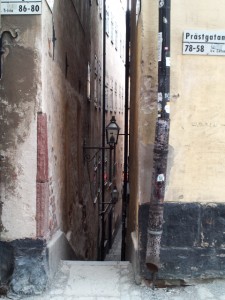


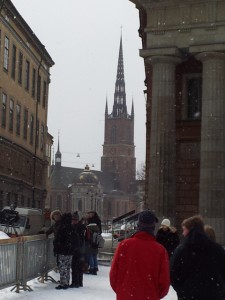 And some of my favorite miscellaneous shots from Gamla Stan. From left to right: the narrowest street in Gamla Stan. A shot of Gamla Stan’s waterfront, taken from my room aboard Af Chapman. Stockholm’s own Runestone, re-purposed for the construction of some anonymous building. And lastly, Riddarholmskyrkan in the snow.
And some of my favorite miscellaneous shots from Gamla Stan. From left to right: the narrowest street in Gamla Stan. A shot of Gamla Stan’s waterfront, taken from my room aboard Af Chapman. Stockholm’s own Runestone, re-purposed for the construction of some anonymous building. And lastly, Riddarholmskyrkan in the snow.
Last week we had a whirlwind tour of Stockholm with Gustavus’s Vice President for Advancement Tom Young, who got us some behind the scenes access to some exciting locales- including Gamla Stan’s Storkyrkan. We were very privileged to have a tour of the Church’s interior from the current Deacon, the generous Christina. Now the outside of the church may be a drab, unimaginative, Baroque style sadly plastered over the original Gothic beauty, the renovators left much of the medieval interior intact. These pictures are from last Thursday the 21st of March.
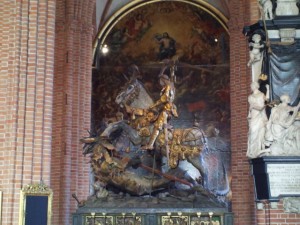
The statue commemorates Sten Sture’s victory over Danish soldiers in a 15th century battle- fought inside Stockholm
After our time in Storkyrkan, we inadvertently paid a visit to another site of medieval heritage in Stockholm with Tom Young. We went to a women’s shelter in Norrmalm, a good deal away from Gamla Stan. True, there were no large population centers outside of Gamla Stan in the middle ages- but there was a nunnery. The shelter, run by Stadsmission (City’s Mission), is located in what used to be part of a large medieval nunnery. I found the continuity of the space as a safe haven for Stockholm’s battered and scared women quite pleasing.
Last Friday the 22nd I had some free time, so I decided to pay the National History museum a visit. This turned out to be a fantastic choice; most of the museum’s artifacts date back to the Viking and Medieval periods. It was a real treat for me to see artifacts in person that I had only seen pictures of in my books. Talk about dreams coming true right? Let’s first start with everyone’s favorite seaborne marauders, the Vikings.

One of the most famous Gotland picture stones. Note its keyhole shape- scholars speculate these stones were taken as literal portals into the afterlife and the divine.
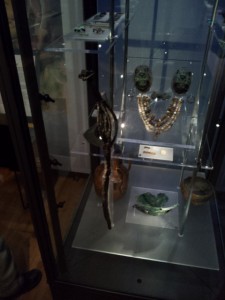
A staff found in a powerful woman’s grave; in Viking folklore mainly women preformed magic called Seiðr- and used staffs such as this one in rituals.

One of my absolute favorite finds in any Viking grave. This is a Buddha statue dating back from 6th century India. It powerfully illustrates how goods traveled in the early middle ages- most likely a Scandinavian bought this statue from an Arab trader, who previously bought it from a travelling Asian merchant.
Once converted to Christianity in the 11th century, Sweden entered into its High Middle Ages. Here are some exciting fragments from Sweden’s Catholic past:
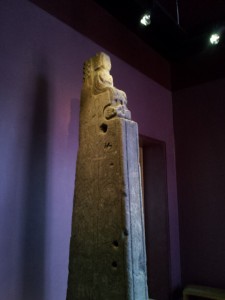
Olaf II of Norway- the ruthless, merciless Viking king of the mid 11th century. He’s also known as Saint Olaf.

St. Birgitta’s life story through pictures- Jesus appearing to her, her acceptance of God’s plan for her, and her preaching to an audience. It’s fascinating to see mystical and evangelical influences, possibly inspired by St. John’s gospels, at work in the pictures. See how “The Word” is literally coming out of her mouth in the upper right hand image.
And just yesterday, the 26th of March, we finished up our tour of medieval highlights with a guided tour of Stockholm’s Medieval Museum. Our guide was fantastic, treating us to active scholarly debate and modern research. I wished I had more time to speak with him.

A reconstruction of Birger Jarl’s face. Scientists based it off of his skull using some technological wizardry. Sweden owes a large debt to Birger, who finally unified Sweden under one stable king.
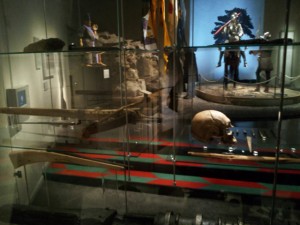
Another unfortunate cranium: this fellow took a crossbow bolt to the head. Look for a little square hole near where his ear would have been.
Stockholm’s past runs deep. The ritzy, bustling, commercial centers of Norrmalm and Östermalm may appeal to some. There’s quite literally an H&M on every block and many more trendy shops to satisfy anyone’s fashion needs. But what makes Stockholm special to me isn’t its modernity- it’s its antiquity. Untouched by recent wars, Gamla Stan stands as a mirror into a bygone age that I can only grasp at like wisps of smoke. When you walk around the narrow cobbled streets, there’s a certain energy in the air. Voices from the past whisper their stories to you, swallowing you up into a land of imagination and fairy tales. It’s that boyish excitement I feel in Gamla Stan that drives me to study history- to satiate that endless curiosity and fascination. I hope you’ve enjoyed my medieval digression, and come away from my simple blog post with just a piece of that excitement that fuels my historical enthusiasm.
Until next time friends,
-Devon R. Bealke
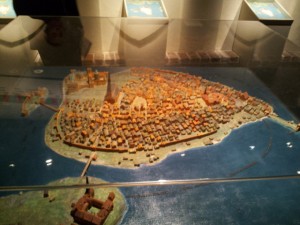

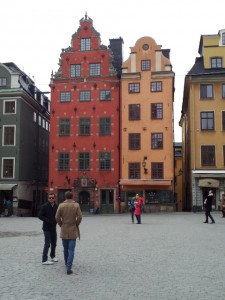
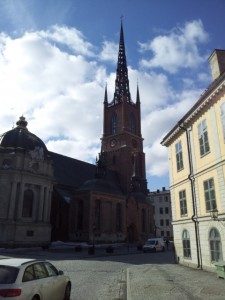
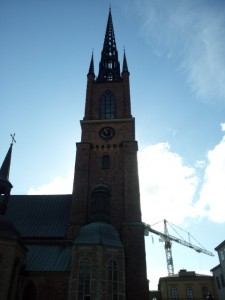
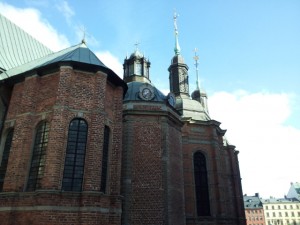

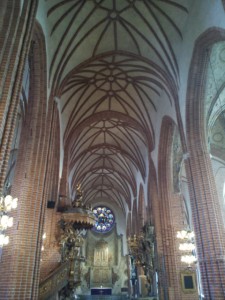
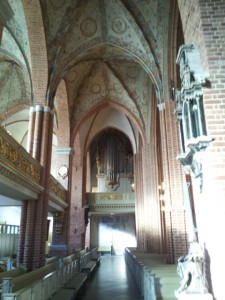


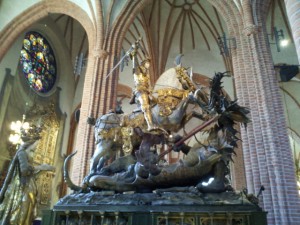
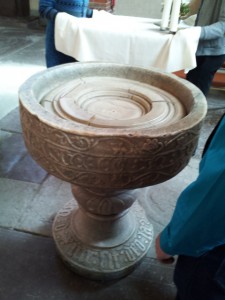
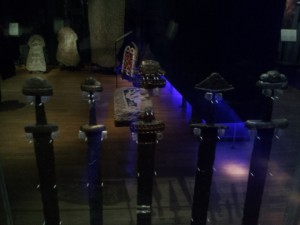

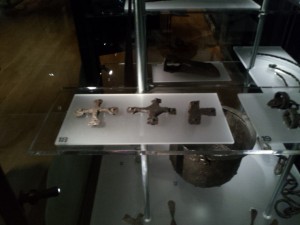
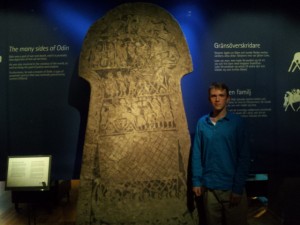


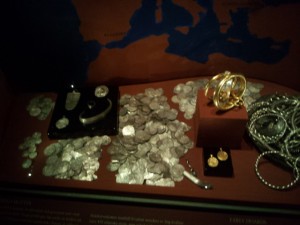
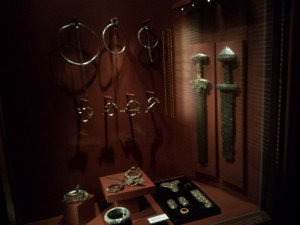

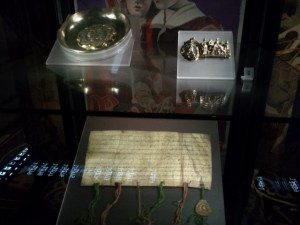
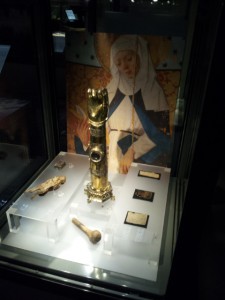
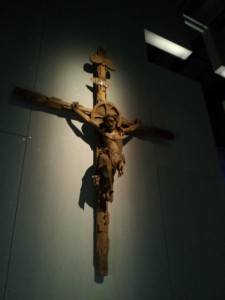

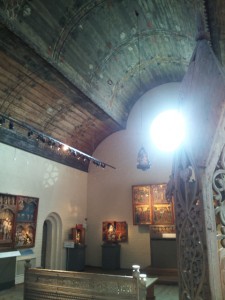


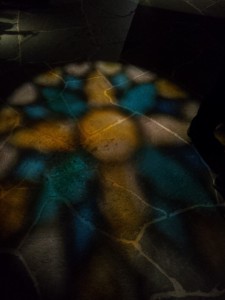
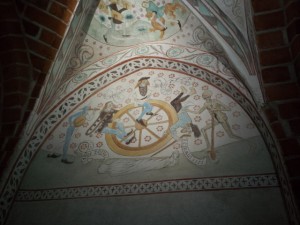
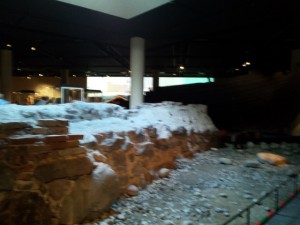
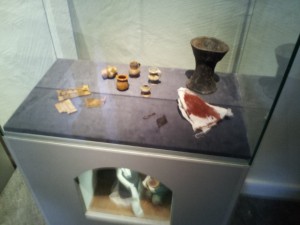


Thanks you for your excellent “medieval digression,” Devon! It’s obvious that you and the others in your group have seen both “the modernity and antiquity” of Stockholm. It’s great that you’ve taken time to travel back to see — and imagine — the city’s past.
rt
Devon,
Great pictures and interesting and informative text. Thank you for providing so many pictures. I can get a sense of what medieval Stockholm was like. Have you come across Queen Christina of Sweden in your studies? I learned she was the daughter of Gustavus Adolphus. I am just now reading about her in a book entitled “From Dawn to Decadence” by Jacques Barzun. She was a patron of natural philosophy, what we today call science. I hope you continue to enjoy your time in Sweden. Take care.
Uncle Steve
Nicetext and pictures. Will you be in town April 4. I will perform at Maria Magdalena Church at 6pm (18.00) together with Erik Westberg & Piteå Chamber Choir. Erik visited GAC 2004 with his Vocal Ensemble.
Hope to see you there at church!
Krister Stoor
I’m an occasional guest of your blog, with this very good article I will make sure to drop by your website more often.